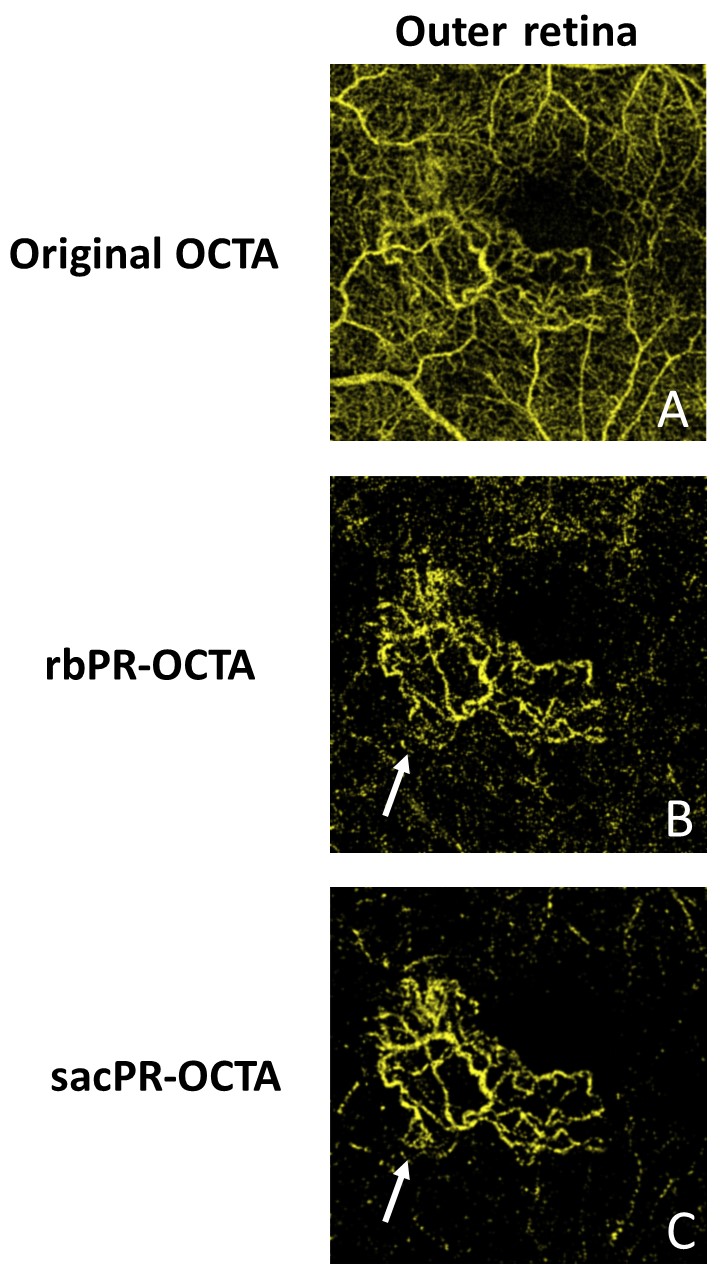Categories | Inventors
Technology Overview
OHSU # 3142 — Improved removal of projection artifacts in optical coherence tomographic angiography
Summary
The current algorithm improves projection artifacts removal for more accurate optical coherence tomographic angiography (OCTA) scans and better quantitative detection and monitoring of vascular abnormalities.
Technology Overview
Projection artifacts are one of the significant limitations of OCTA imaging, and a reliable projection-resolved OCTA algorithm is essential for accurate measurements of vascular abnormalities, such as macular ischemia and choroidal neovascularization (CNV). However, current solutions require time-intensive segmentation steps and still have limitations in artifact removal. The laboratory of Yali Jia, Ph.D., a leader in the field of OCTA, has developed an improved algorithm for removing projection artifacts and more accurate OCTA scans for better disease diagnosis and monitoring.
Features of the current algorithm for signal attenuation-compensated projection-resolved OCTA (sacPR-OCTA), initially validated in 109 OCT scans, include:
- Improved flow signal and intact microvascular patterns in deeper retinal scans (see Figure).
- Increased suppression of background signal.
- Improved ability to remove projection artifacts in shadow areas, common in real-world clinical data.
- Utility for improved quantification and monitoring of vascular abnormalities for better patient outcomes.
- Compatible with any OCT device and image resolution output.

Figure showing comparison of OCTA scans of outer retina showing improved CNV detection with sacPR OCTA (white arrows). rbPR-OCTA: Reflectance-based projection-resolved OCTA; sacPR-OCTA: signal attenuation-compensated projection-resolved OCTA.
Publication
Wang et al., "Signal attenuation-compensated projection-resolved OCT angiography." Biomedical Optics Express 14(2023): 2040-2054. Link
Licensing Opportunity
This technology is available for licensing.
Inventors:
Categories: